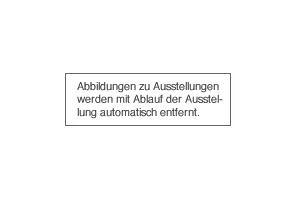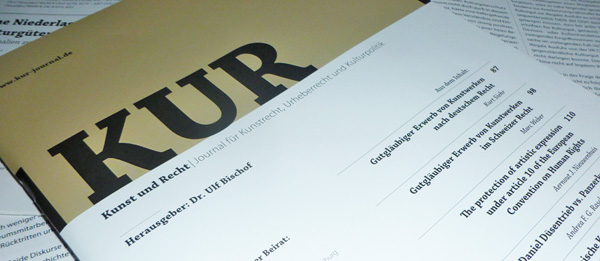
Agora Crew: Christian Hildebrand, Marcela Donato, Caique Tizzi, Pedro Jardim and Tainá Moreno, Foto: Frank Brück, Copyright Agora
Please scroll down for English version
In unserer neuen Interviewreihe stellen wir Berliner Projekträume vor, die es zu besuchen lohnt. Agora bietet auf sieben Etagen ein umfangreiches Programm für Künstler, Choreographen und Interessierte aus allen Disziplinen. Das Angebot reicht von Yoga über Life Drawing zu Filmevents und Ausstellungen. Außerdem werden Coworking Spaces, Büros für Start-Ups und Räume für Veranstaltungen vermietet. Das hauseigene Café/Restaurant "Kurz vor Eden" bereitet täglich Frühstück und Mittagessen für Mitglieder und Gäste zu. Vom 21. bis 23. Juni veranstaltet Agora ein vielversprechendes Kulturfestival. Aus gegebenem Anlass haben wir mit Marcela Donato, eines der fünf Führungsmitglieder des Agora Collective gesprochen.
Vivi Kallinikou: Wann und mit welcher Motivation wurde das Agora Collective gegründet?
Marcela Donato: Agora öffnete seine Türen im Juni 2011. Es wurde von Caique Tizzi und Pedro Jardim gegründet. Zuvor führten die beiden eine Bar und stellten dort Künstler aus. Sie wollten einen Raum, in dem sie andere Arten von Projekten und Formaten realisieren konnten - das war die Geburtsstunde von Agora. Das Kollektiv bildete sich nach und nach. Der Entwicklungsprozess war eher organisch: wir haben uns nicht hingesetzt und einen strengen Plan formuliert, aber gemeinsam haben wir unsere Werte, Absichten und die Idee bestimmt. Mittlerweile sind wir uns sehr klar darüber, was wir machen und wo wir hinwollen. Wir sind in den vergangenen Jahren stark gewachsen; Agora hatte ursprünglich eine Etage, heute sind es sieben.
VK: Ihr habt im Dezember 2012 ein ´Artists in Residency` Programm gestartet. Wie können sich Künstler dafür bewerben und wie ist das Programm strukturiert?
MD: Die Residencies begannen offiziell im Dezember 2012, aber das Programm haben wir bereits im Sommer entwickelt und damit experimentiert. Acht Künstler wurden damals eingeladen, die dann unter dem Titel "Affect" gemeinsam miteinander arbeiteten.
Die zweite Entwicklungsstufe war eine Kooperation zwischen Agora Collective und der mexikanischen Künstlerin Kari Mayo, die wir nach Berlin einluden.
Seit Dezember 2012 finden die Residencies im jetzigen Format statt: Wir bringen zwei internationale Künstler zusammen, die sich nicht kennen und lassen sie für einen Monat an einem Projekt arbeiten. Sie arbeiten und wohnen im Agora. Außerdem erhalten sie von uns Material und Medien für ihre Arbeit sowie den Kontakt zur Berliner Kunstszene und natürlich eine Plattform. In diesem Monat haben wir ausnahmsweise vier anstelle von zwei Künstlern eingeladen: Margot Charbonnier, Guilhermina Gomez, Christiana Caro und Caroline Gallacher. Das Thema wird von den Künstlern ausgewählt, die aktuelle Zusammenarbeit heißt "Activating Public Spaces" (agoracollective.org/agoracollects) und findet parallel zu unserem Festival Agora Collects statt.

Agora Coworking, Foto: Frank Brück, Copyright Agora
VK: Was unterscheidet Agora von anderen Projekträumen?
MD: Ich würde sagen, einer der Schwerpunkte von Agora ist die enge Beziehung zu den Künsten und der interdisziplinäre Ansatz. Wir haben eine Menge an kreativen Menschen, die sich bei Agora vor Ort betätigen: Choreographen und Theatergruppen proben in unseren Räumen, Kuratoren arbeiten hier, Künstler haben Ateliers, jeder ist in seiner Arbeit völlig unabhängig. Dennoch hat sich Agora zu einem Ort entwickelt, wo alle diese Menschen in ihren unterschiedlichen Disziplinen zusammen kommen und sich gegenseitig beeinflussen. Am Ende kooperieren bildende Künstler mit Grafik-Designern oder Web-Entwicklern, Musikproduzenten mit Illustratoren. Jedermanns Handeln wird auf diese Weise von der Umgebung beeinflusst. Wir möchten ein Ort sein, an dem genau dieser Austausch stattfindet, wo all diese Projekte sich kreuzen.
VK: Was war das bisher interessanteste Projekt oder die spannendste Zusammenarbeit für dich?
MD: Das waren so viele! Künstlerisch würde ich das gemeinsame Projekt “A Rite” vom Agora Collective und Kari Mayo hervorheben. Dafür sammelten wir 500 Schuhe von Freunden, Freundesfreunden und anderen Interessierten und organisierten ein partizipatives Format. Es war schön zu sehen, wie viele Menschen sich für ein Kunstprojekt engagieren, wie wir uns auf sie verlassen konnten. Wir malten immer ein Quadrat auf dem Straßenpflaster in Farbe und hinterließen einen Schuh mit einer Notiz, der die Finder eine Einladung, einen Orts- und eine Zeitangabe entnehmen konnten, um uns im besten Fall den Schuh zu bringen. Das Projekt wurde vom Institut Cervantes unterstützt und fand in dessen Räumen statt. Es war riskant, zwar glaubten wir an unsere Idee, wussten aber nicht, was passieren würde, waren uns nicht sicher, ob die Dinge funktionieren, ob die Leute überhaupt darauf reagieren.
Innerhalb einer Woche musste alles vorbereitet werden. Am Ende standen über 170 Leute in der Schlange vor dem Institut Cervantes, um Schuhe abzugeben - ein wirklich besonderes und schönes Ergebnis.
Ich denke, auch das kommende Festival wird eine tolle Erfahrung für alle Beteiligten. Normalerweise sind alle sehr mit ihren eigenen Projekten beschäftigt, aber nicht bei diesem Festival. Es macht einfach Freude zu sehen, wie die einzelnen Teile zusammenwachsen und wie eine Idee, harte Arbeit und Entschlossenheit in so etwas Besonderes münden. Wir hatten zwei Monate Zeit, um das Festival zu entwickeln und kein Budget. Das war eine große Herausforderung.

Agora Collects, The Waiting Room, Foto: Frank Brück, Copyright Agora
VK: Das angesprochene Festival heißt Agora Collects und findet vom 21. bis 23. Juni 2013 statt. Erzähl uns über das Konzept und eure Motivation.
MD: In Agora Collects manifestiert sich die Idee des Sammelns oder Versammelns - sammeln von Projekten und Menschen, die Agora in der Vergangenheit inspiriert haben. Es geht vor allem um Menschen - Künstler, Tänzer, Musiker, Denker -, deren Arbeit und Engagement wir bewundern und denen wir etwas zurückgeben wollen. Wir bieten einen Raum, ein Netzwerk und eine Plattform, um ihre Arbeiten zu zeigen oder ihre Visionen zu diskutieren. Es werden sich auch sicher neue kollaborative Möglichkeiten für alle Beteiligten ergeben. Wir haben Referenten eingeladen, z. B. Christophe Knoch, Sprecher der Koalition der Freien Szene, der dem Thema eine große Präsentation widmet. Er kämpft dafür, dass die Freie Szene in Berlin gehört, offiziell für ihre Arbeit und Mühe anerkannt wird und die richtige Unterstützung bekommt. Gleichzeitig informiert er über das Selbstverständnis der Freie Szene innerhalb des Systems, zeigt, wie wichtig es ist, sich als Kreativer in Berlin zu beteiligen und der Stadt etwas zurückzugeben.
Inhaltlich haben wir kein Thema vorgegeben. Es wird von allen Disziplinen etwas geben: Food-Art-Events, Installationen, Konzerte, ein fantastisches Performance Projekt “The Waiting Room” (agoracollects/the-waiting-room). Außerdem organisieren wir Podiumsdiskussionen oder unternehmerische, künstlerische und kulturell orientierte Reden bspw. zu Urban Gardening. Während des Festivals eröffnen wir vier großen Ausstellungen, eine davon zeigt die Zusammenarbeit von vier Künstlern aus dem Institut für Raumgestaltung, das von Olafur Eliasson geleitet wird. Die Künstler werden die Räume besetzen und bleiben für die Dauer von sechs Monaten. Ihr müsst kommen und es euch ansehen.
VK: Das werden wir tun, vielen Dank für das Gespräch.
Agora Collective
Mittelweg 50
12053 Berlin
Offnungszeiten: 9 - 18 Uhr
agoracollective.org
Agora Collects
Festivaldauer: 21. - 23.06.2013.
agoracollective.org/agoracollects/
Tickets: € 5 - 10, erhältlich online oder vor Ort/ availbale online and at Agora. Discount avaibale only online.

Copyright Agora
English Version
art-in-berlin´s new interview series introduces you to Berlin´s project spaces worth a visit. We talked to Marcela Donato, one of five leading members of the Agora Collective.
Vivi Kallinikou: When did Agora open its doors and what was the motivation behind it?
Marcela Donato: Agora opened its doors in June 2011. It was founded by Caique Tizzi and Pedro Jardim, who were previously running a bar and artist space, showing exhibitions. They wanted a space where they could develop other types of projects and different formats; cultural projects, venues where people come together, so they founded Agora. Bit by bit the collective formed, and became the constellation it is today. The process of forming Agora was rather organic, it wasn´t like we had a set plan, moving towards an ultimate goal. Together we established intentions, and an idea of which direction we wanted to head in. That is now really clear. We have grown a lot. Agora had one floor in the beginning, now it´ s seven.
VK: In December 2012 Agora started an ´Artists in Residency` program. How do artists apply for it and how is it structured?
MD: The residencies officially began in December 2012, but the program was developed and experimented with last summer. Eight artists were invited for a collaboration and have worked together under the title ´Affect`. The second stage of development was a collaboration between Agora Collective and the Mexican artist Kari Mayo, who we invited to Berlin. Since December 2012, the residencies have been held in the current format, we bring together two international artists, who do not know each other, and whose work we find compatible, and let them work on a project for a month. They work and live in Agora, receive material and media for their work, the connection to the Berlin art scene, and of course the platform. This month we have invited four artists instead of two: Margot Charbonnier, Guilhermina Gomez, Christiana Caro and Caroline Gallacher. The topic is selected by the artists, the current collaboration is called ´Activating Public Spaces` (agoracollective.org/agoracollects).
VK: What differs Agora from other project spaces?
MD: I would say one of the stronger points of Agora is the close relationship with the arts, and the cross disciplinary approach. We have a huge range of creative people working here at Agora, we have a lot of artists coming in, choreographers and theater companies rehearsing, curators work here; everyone is in a way independent. We realised that it became a place where multiple disciplines come together and cross, as people end up working together or are affected by each other´s work. Visual artists end up working with graphic designers or web developers, music producers with illustrators, so everything gets influenced by the surrounding people and disciplines. We like to be a hub where this exchange takes place, where projects cross and influence each other.
VK: What was the most interesting project or collaboration during your time at Agora?
MD: Oh my god, there were so many! Artistic wise there was a really special collaboration with Kari Mayo. The project was called “A Rite", and it involved the participation of so many people. It was beautiful to see how so many people could commit to something and how we could count on them. From Sunday night to Monday we painted single squares on the street in color, and left a shoe on top with a note saying: "If you found this shoe, you are a special guest of "A Rite". Please bring this shoe to Instituto Cervantes at this date, at this time" - Instituto Cervantes was where the project took place and was commissioned by. It was super risky, we did not know what would happen, but we believed in the beauty of the idea. We had one week to prepare everything and of course to deliver it, getting 500 shoes and all the materials. In the end there were 178 people lining up at the block next to Cervantes to bring shoes. The outcome was really special and beautiful. I also think the festival coming up is going to be a great experience for everyone involved. I am really excited about it. Usually everyone is very busy working on their own projects, but this united us, and again it is beautiful to see the hard work paying off, how the pieces come together and how an idea and hard work can create something so special. We had two months to develop the festival and zero budget, so its all us, our money, hard work, really trusting the idea. I think it is going to be one of our best and most special projects.
VK: The festival you just mentioned is Agora Collects and takes place from 21st to 23rd of June. Tell us about the concept and motivation behind it.
MD: As the title recalls, it is about the idea of collecting - collecting projects and the people, that have inspired Agora. People that have participated, collaborated over the past two years, people we admire for their work and commitment. It´s like returning a bit of what these people (artists, dancers, musicians, thinkers) brought to Agora and giving them what we can offer, which is a space, a network, and a platform to show their work or discuss their visions. It will also open new collaborative possibilities for everyone participating. We invited speakers, for example Christophe Knoch, who is the spokesperson of the coalition of the independent scene. He is going to give a big presentation about this topic. He is fighting for all these project spaces, and artists to be heard in berlin, to be officially recognized for their work and effort, to get the proper support, and also to make the independent scene understand their role in the system, and how important it is for them to participate and to give back to the city. So this was the motivation behind the festival. It was not important for us to dictate subjects and ideas, but really embrace the interdisciplinary platform - what Agora is about. The programm offers food art events, installations, concerts, a fantastic performance project called “The Waiting room” is going to take place (agoracollects/the-waiting-room). We have entrepreneurial, artistic and cultural talks, for example about urban gardening. There will also be four big exhibition openings - one of them is a collaboration between four artists from the Institut für Raumexperimente lead by Olafur Eliasson - that are going to occupy the spaces and remain there for six months. You have to come and see for yourself!
VK: We certainly will, thank you for the talk.
Agora Collective
Mittelweg 50
12053 Berlin
Offnungszeiten: 9 - 18 Uhr
agoracollective.org
Agora Collects
Festivaldauer: 21. - 23.06.2013.
agoracollective.org/agoracollects/
Tickets: € 5 - 10, erhältlich online oder vor Ort/ availbale online and at Agora. Discount avaibale only online.







